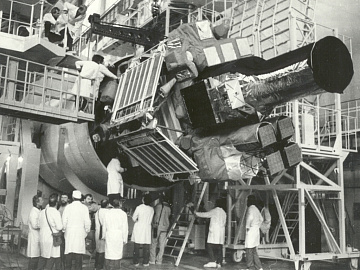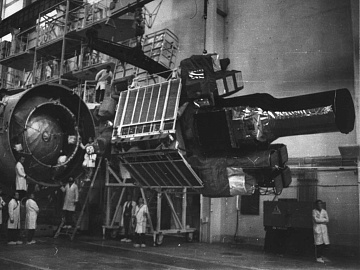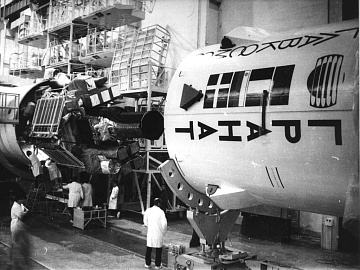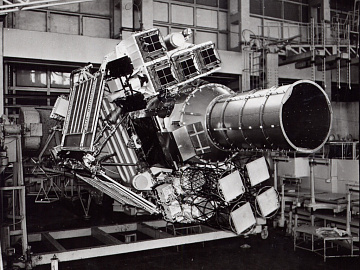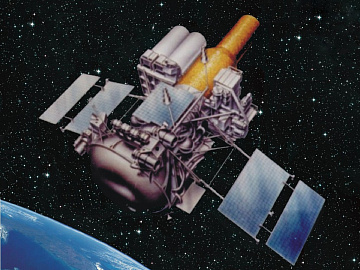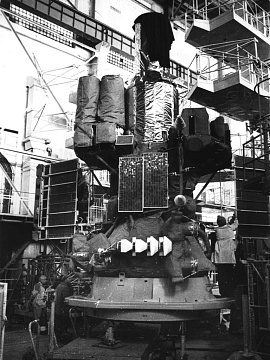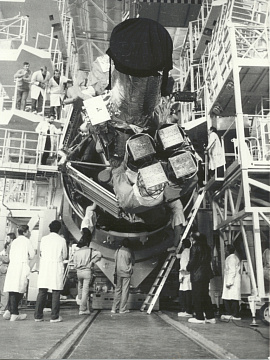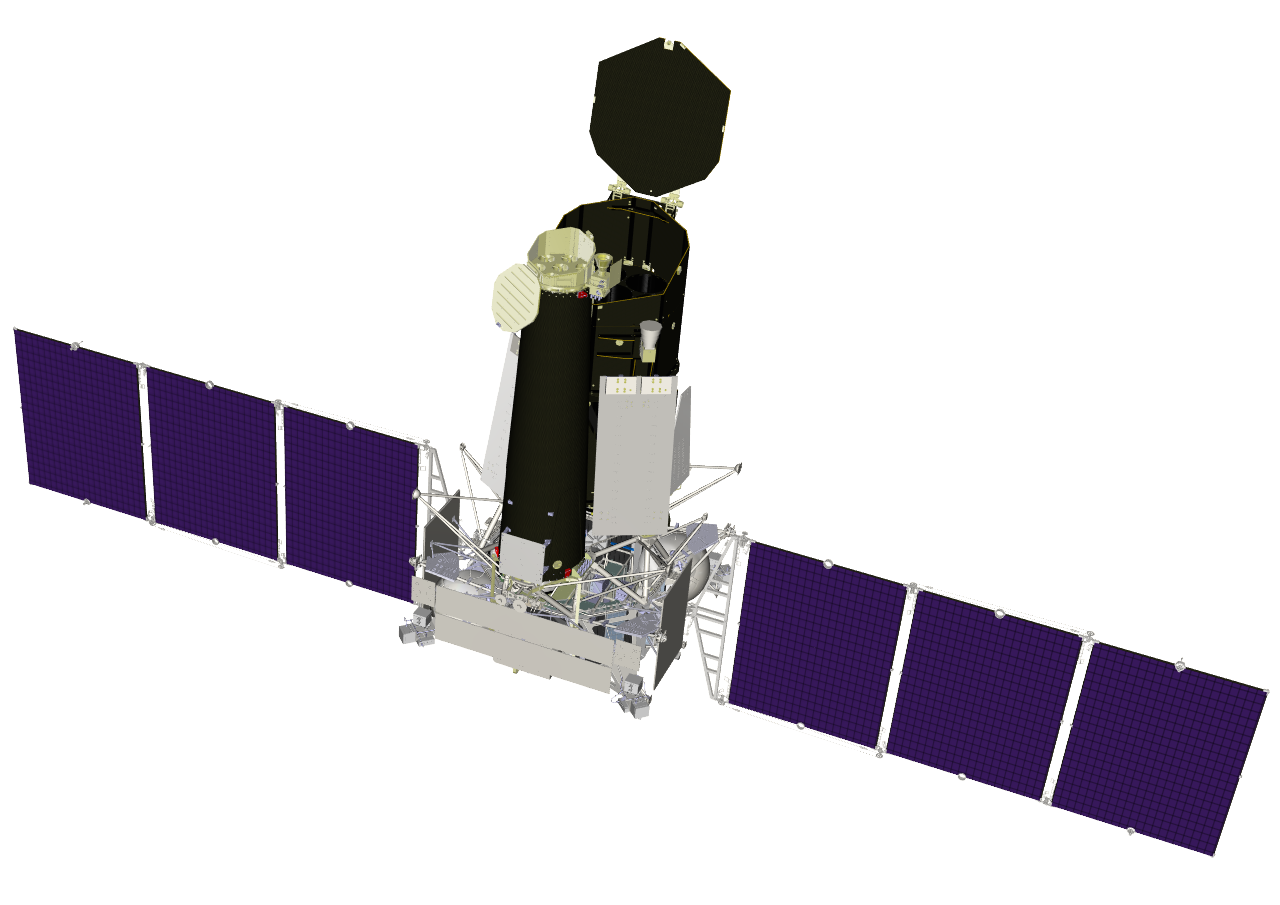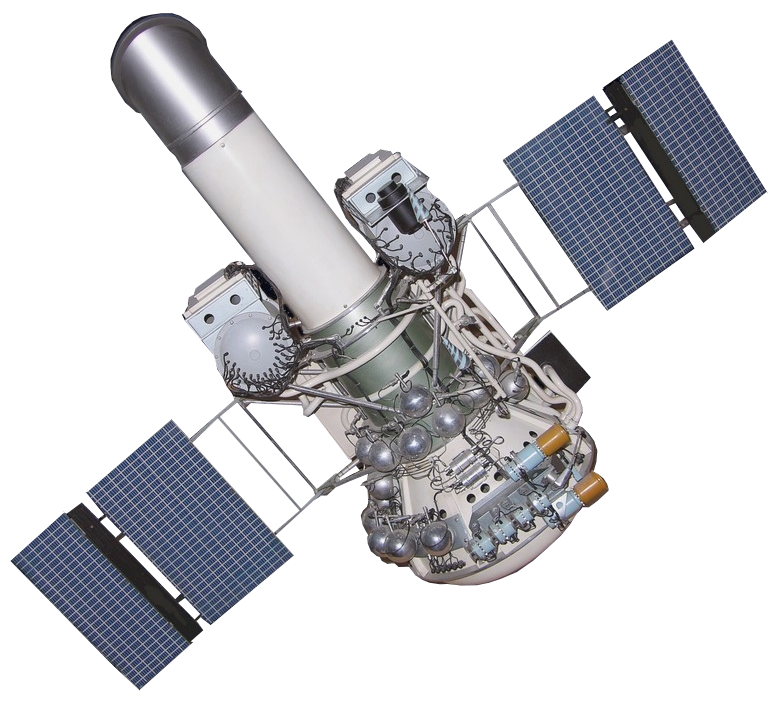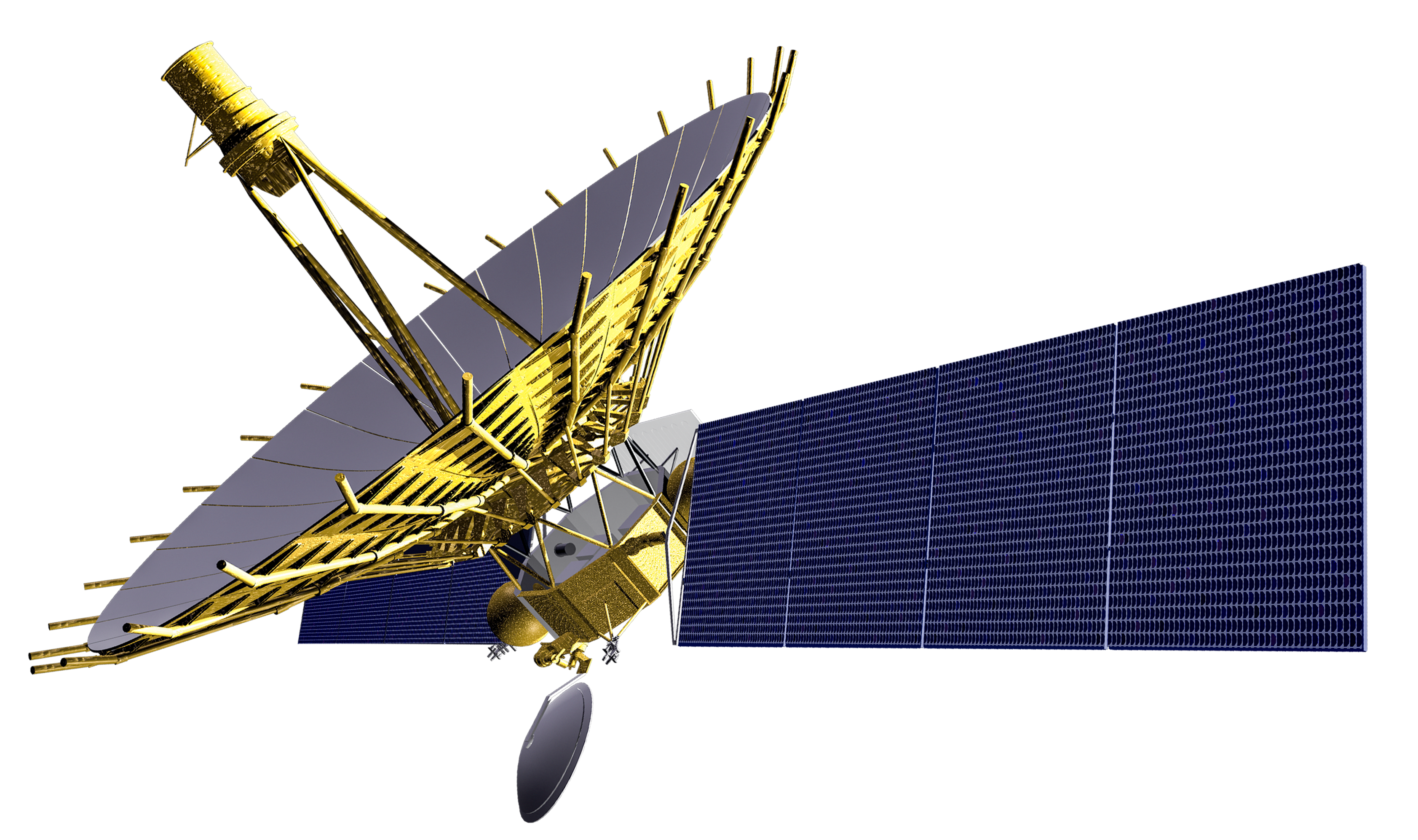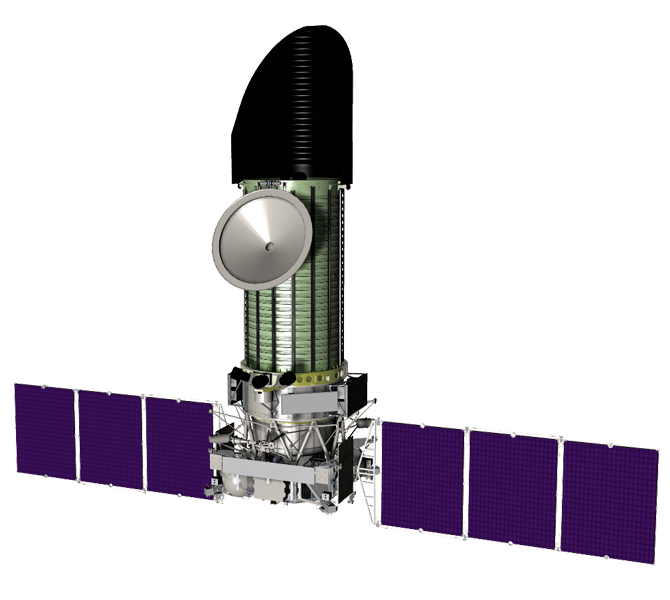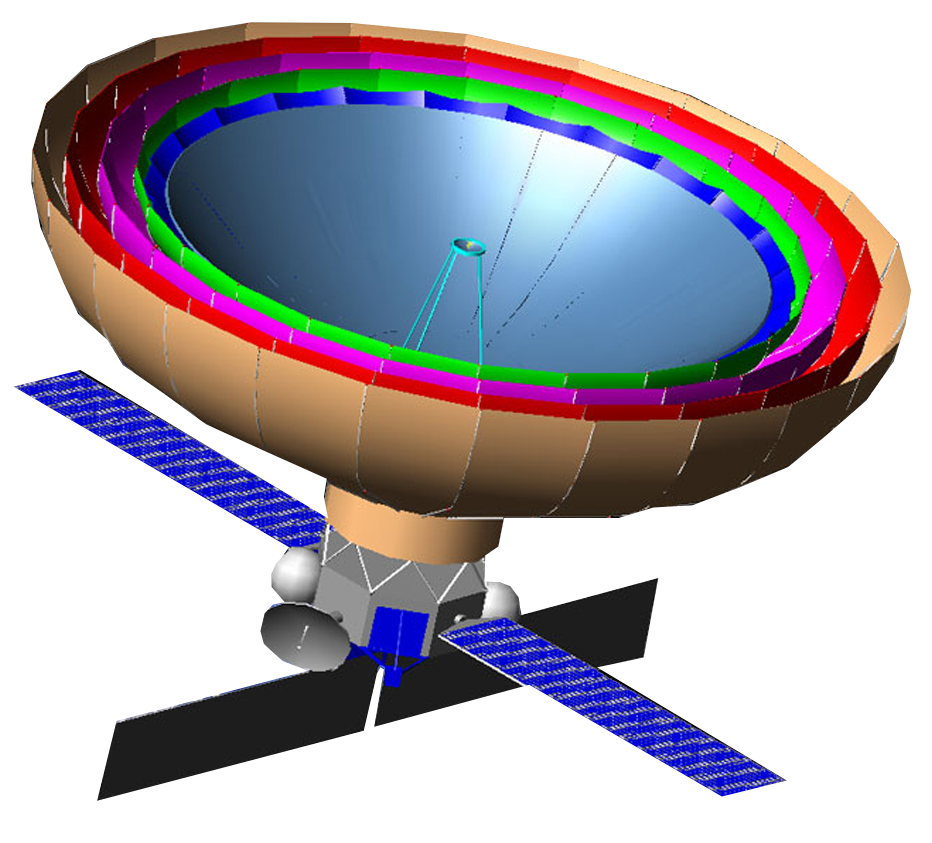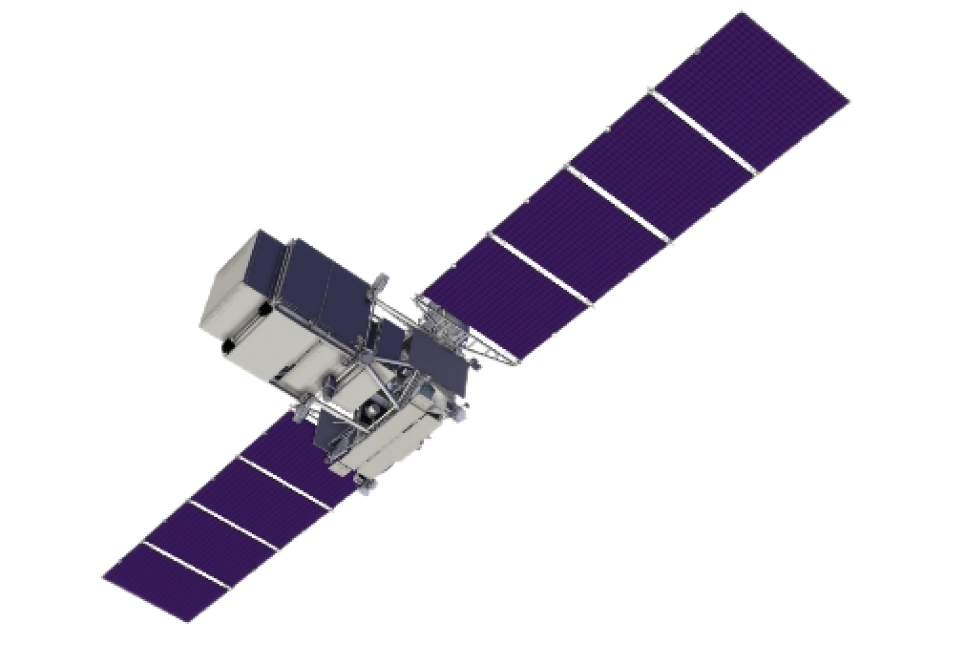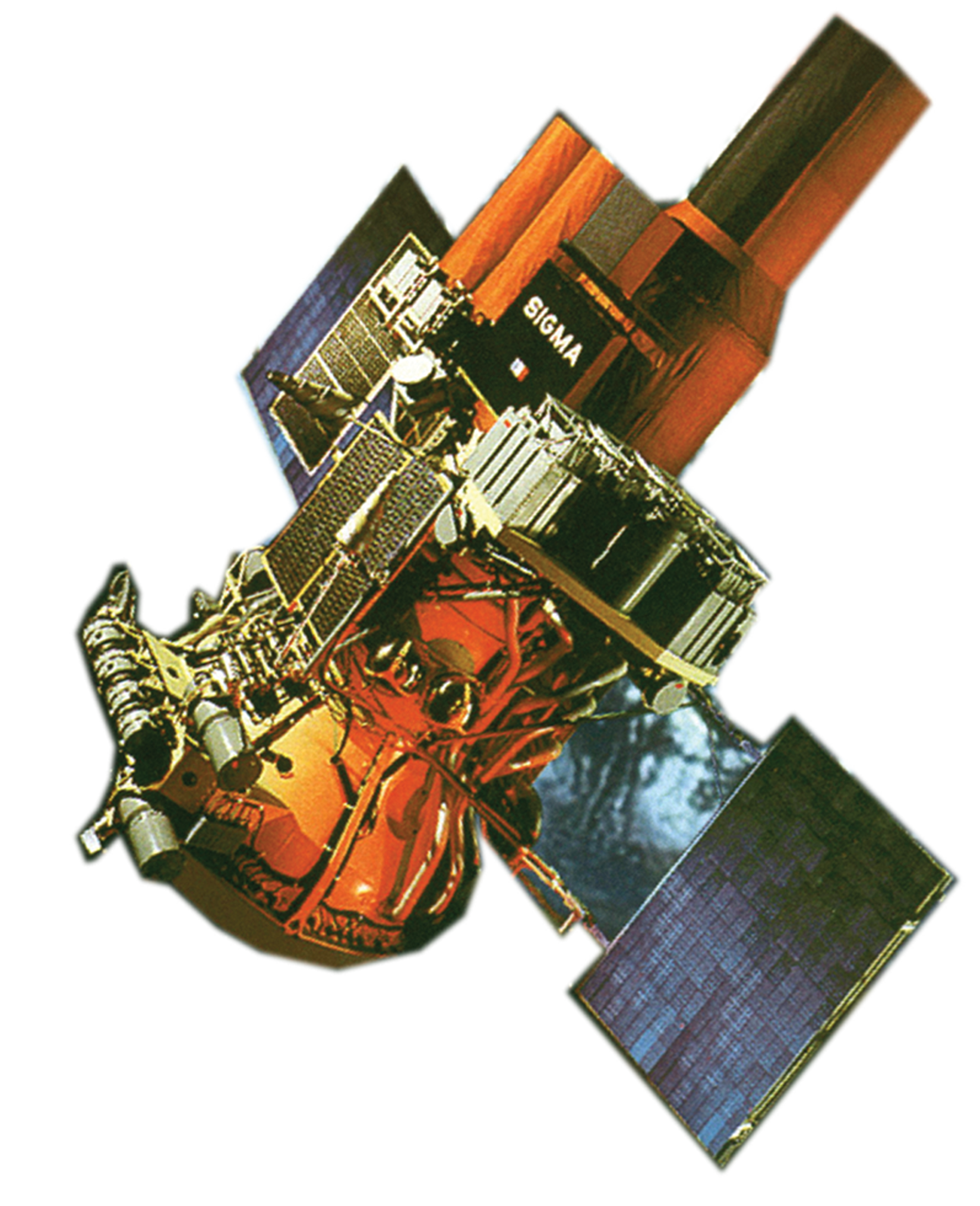
Characteristics
- Destination:
- astrophysics
- Status:
- decommissioned
- Research Object:
- The Universe
- Launch Date:
- December 1, 1989
- Spaceport:
- Baikonur
- Launchers:
- Proton-K
- Machine Weight:
- 4000 kg
- Working Orbit:
- highly elliptical, perigee 2 000 km, apogee 200 000 km, inclination 51.5°
- Active Lifetime:
- 9 years
Description
The Granat spacecraft was the second of the astrophysical extra-atmospheric unmanned observatories created in the USSR. It was designed to carry out the astrophysical studies of galactic and extragalactic sources of cosmic radiation in the X-ray and gamma-ray bands of electromagnetic radiation. Its mission was to conduct the detailed studies of compact and extended cosmic-ray and soft gamma-ray sources.
The observatory was conceived as a complex of instruments operating in orbit the orbit as a man-made earth satellite perceiving the radiation in the broadest range from 2 keV to 100 MeV. Its launch opened the new opportunities for determining the temperature of the thermal plasma in the galaxy clusters, X-ray pulsars, accretion disks around the black holes, for identifying the space objects emitting by means of the nonthermal mechanisms.
